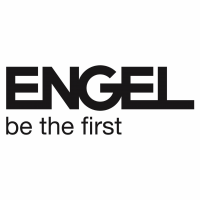14 2: Notes Payable Business LibreTexts
A common example of a trade payable is when a business purchases goods, such as raw materials or office supplies, on credit from a supplier. Until the invoice is paid, the amount is recorded as a trade payable on the company’s balance sheet. Recording and auditing trade payables is essential to maintaining accurate financial records and managing vendor relationships effectively. In a manual finance setup, this process usually involves spreadsheets, paper invoices, and a lot of back-and-forth verification. Understanding this difference helps you track spending more accurately and make better cash flow decisions. While both are recorded under accounts payable on the balance sheet, separating them internally gives better control over vendor-related and non-vendor expenses.
- Notes payable impacts working capital if classified as short-term; long-term notes are listed separately on the balance sheet.
- A software company hires a marketing agency on a six-month contract, agreeing to pay the agency $30,000 at the end of the contract period.
- In this way, the $10,000 paid at maturity (credit to Cash) will be entirely offset with a $10,000 reduction in the Note Payable account (debit).
- In certain cases, a supplier will require a note payable instead of terms such as net 30 days.
. Is notes payable recorded as a debit or credit entry?
Accurate recording helps prevent missed payments, duplicate entries, and confusion during audits or vendor inquiries. The process begins when your business receives an invoice for goods or services purchased on credit. For example, the finance team might receive a $500 invoice for monthly bookkeeping services, due in 30 days. The company owes $0 after this payment, which is $10,999 – $10,999.
Notes Payable are a promise in writing whereby a borrower assures repaying the lenders within a specific period. These promissory notes indicate the loan that one party lends to the other, expecting the timely repayment, which may be the principal alone or the principal along with the interest amount. A business will issue a note payable if for example, it wants to obtain a loan from a lender or to extend its payment terms on an overdue account with a supplier. In the first instance the note payable is issued in return for cash, in the second they are issued in return for cancelling an accounts payable balance.
The company owes $40,951 after this payment, which is $50,000 – $9,049. In addition, the amount of interest charged is recorded as part of the initial journal entry as Interest Expense. The amount of interest reduces the amount of cash that the borrower receives up front.
Notes payable is a liability account that’s part of the general ledger. Businesses use this account in their books to record their written promises to repay lenders. Likewise, lenders record the business’s written promise to pay what are notes payable back funds in their notes receivable.
An interest-bearing note is a promissory note with a stated interest rate on its face. This note represents the principal amount of money that a lender lends to the borrower and on which the interest is to be accrued using the stated rate of interest. Laptops and monitors are purchased for new hires in the finance department.
Trade payables vs non-trade payables
They can be found in current liability when the balance is due within one year. They would be classified under long-term liabilities in the balance sheet if the note’s maturity is after a year. Suppose a company wants to buy a vehicle & apply for a loan of $ 10,000 from a bank. The bank approves the loan & issues notes payable on its balance sheet; the company needs to show the loan as notes payable in its liability. Also, it must make a corresponding “vehicle” entry in the asset account. The debit of $2,500 in the interest payable account here is to eliminate the payable that the company has previously recorded at period-end adjusting entry on December 31, 2020.
Trade payable vs accounts payable
As the loan will mature and be payable on the due date, the following entry will be passed in the books of account for recording it. Notes payable are essential for financing growth and managing large-scale investments. While Ramp doesn’t offer notes payable financing, we simplify the management of your full financial picture, including these liabilities. Notes payable are used for significant investments like equipment or property, supporting long-term growth. AP covers operational expenses like supplies, utilities, or inventory for daily business needs.
Watch a demo video and see why businesses that use Ramp save an average of 5% a year. Double Entry Bookkeeping is here to provide you with free online information to help you learn and understand bookkeeping and introductory accounting.
Accounts Payable Vs. Notes Payable: Differences & Examples
You create the note payable and agree to make payments each month along with $100 interest. Notes payable and accounts payable are both liability accounts that deal with borrowed funds. Once you create a note payable and record the details, you must record the loan as a note payable on your balance sheet (which we’ll discuss later).
- Thus, the difference between the face value of the note and the amount lent to the borrower represents the interest charged by the lender.
- It differs from Accounts Payable, which is used when firms purchase goods and services from the other party on credit and expect to pay for them later.
- In scenario 2, the principal is being reduced at the end of each year, so the interest will decrease due to the decreasing balance owing.
- Let’s look at what entries are passed in the journal for notes payable.
- A review of the time value of money, or present value, is presented in the following to assist you with this learning concept.
Accounts Payable refers to the amount a company owes suppliers when goods are purchased or services are availed on credit. It is a current liability account that usually has a credit balance and represents amounts due to suppliers and vendors. The contracts must be registered with the Securities and Exchange Commission (SEC), being identified as a security sometimes.
You get what you need today and pay later, usually within 30, 60, or 90 days. It sounds simple, but managing trade payables effectively is critical to your cash flow, vendor relationships, and financial accuracy. However, the nature of liability depends on the amount, terms of payments, etc. For instance, a bank loan to be paid back in 3 years can be recorded by issuing a note payable. The nature of note payable as long-term or short-term liability entirely depends on the terms of payment.
Managing these two liabilities is crucial for businesses to maintain healthy cash flows and ensure timely payments to vendors and lenders. While accounts payable often involve shorter-term debts and less formal agreements, notes payable typically have more extended repayment terms and involve the payment of interest. The existence of notes payable in a company’s financial records implies a more significant and structured liability than accounts payable. The agreement’s repayment terms, interest rates, and other aspects can impact the company’s cash flow and overall financial health.
Restrictive covenants are any quantifiable measures that are given minimum threshold values that the borrower must maintain. Maintenance of certain ratio thresholds, such as the current ratio or debt to equity ratios, are all common measures identified in restrictive covenants. A note payable is an unconditional written promise to pay a specific sum of money to the creditor, on demand or on a defined future date. These notes are negotiable instruments in the same way as cheques and bank drafts. Notes payable represent a borrower’s obligation to repay borrowed capital, while notes receivable signify a lender’s right to receive payment. Notes receivable are recorded as assets on the balance sheet, categorized as current or non-current depending on the collection period.
National Company must record the following journal entry at the time of obtaining loan and issuing note on November 1, 2018. Confirm balances with vendors – For large or long-outstanding payables, contact vendors to verify what’s owed. Note that since the 12% is an annual rate (for 12 months), it must be pro- rated for the number of months or days (60/360 days or 2/12 months) in the term of the loan. Note Payable is credited for the principal amount that must be repaid at the end of the term of the loan. The preceding illustration should not be used as a model for constructing a legal document; it is merely an abbreviated form to focus on the accounting issues.
If notes payable appear under current liabilities, the loan is due within one year. If it’s located under long-term liabilities, it means the loan is set to mature after one year. Notes payable represent a formal contract between a borrower and a lender.


 Bedienpulte
Bedienpulte Industrie PC
Industrie PC Tablet PC
Tablet PC Industrie Monitore
Industrie Monitore Industrietastaturen
Industrietastaturen Ersatzmonitore
Ersatzmonitore LED-Anzeigen
LED-Anzeigen







